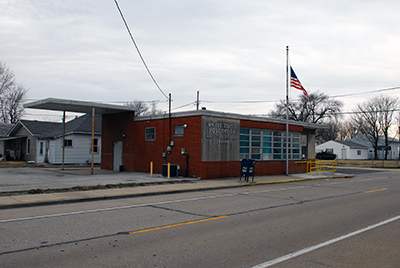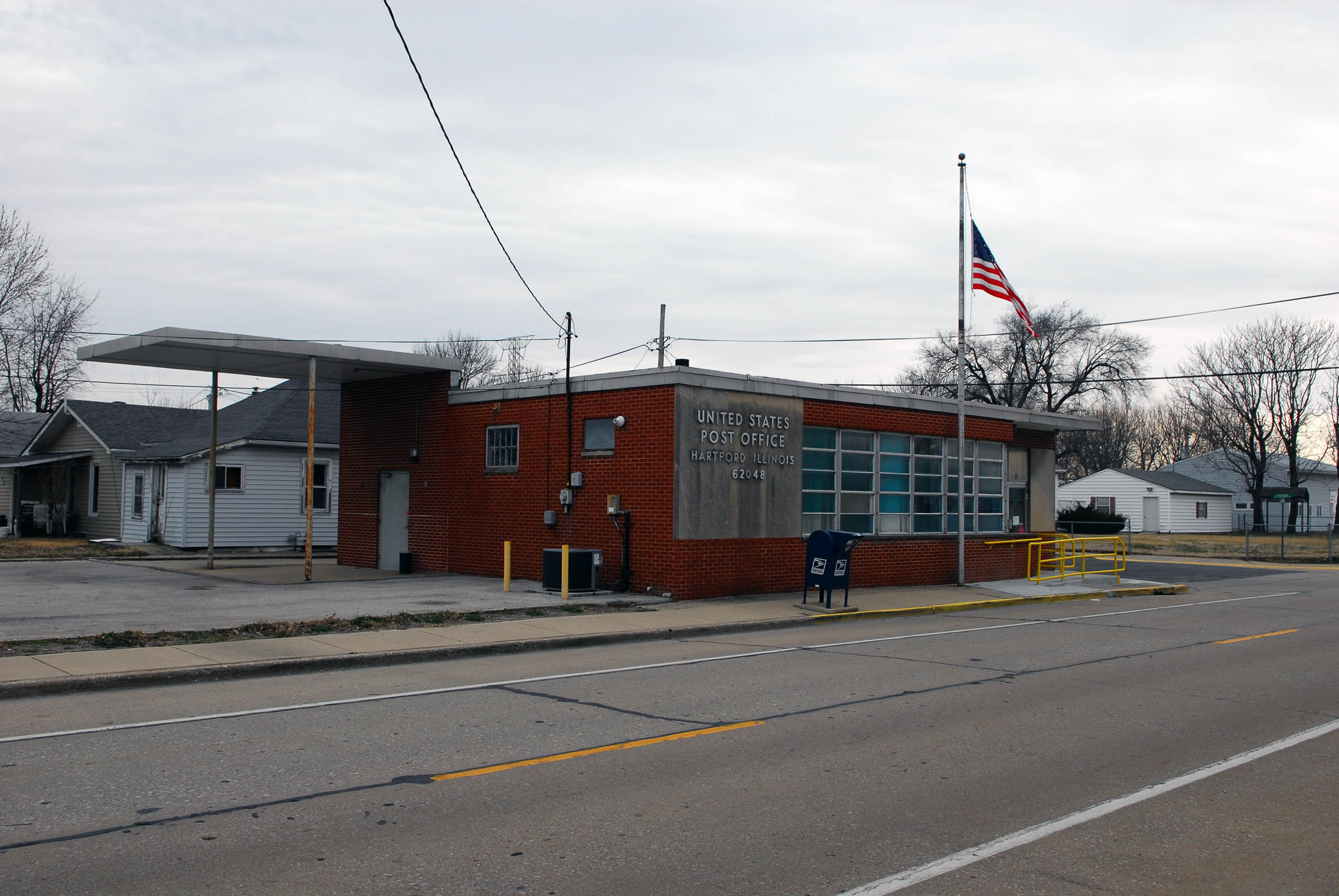



In keeping with a pattern of preliminary production that is a signal characteristic of American Bottom industry, in 1916 International Shoe built what was then one of the largest leather tannery facilities in the country. Sited near an abundant water source and just north of what was then the second largest stockyard in the country, the factory procured its water used in the tanning process from the Mississippi River and its hides from National City Stockyards. Within a few years, 900 of the town’s 1,600 residents were employed at the tannery. Recognizing the singular role the factory played in the development of the village from a loose clustering of agricultural homesteads to a town proper, on the eve of incorporation in 1920 the town considered naming itself “Tannersville.”
The Hartford facility prepared hides for manufacture into finished products elsewhere—primarily in a distributed set of factories located in rural Illinois and Missouri towns. In this, one can read a fascinating territorial diagram that links centralized and decentralized production within a continuous operation. Taking advantage of changing labor dynamics due to mechanization in rural America, International Shoe’s rural factories in some ways point to an earlier era of piecework that was the hallmark of the late nineteenth century rural domestic economy.
The material processes of operating the tannery are important to understanding the relationship between American Bottom industry and an evolving conception of nuisance law. Tanning was a 37-day process that included eight different washes, including initial washings and soaking, a chemical treatment for dehairing, a lime wash, salt and sulphuric acid treatments, a chromium sulphate and salt wash for tanning, and a final dyeing process. Significantly, well over one million gallons of water were used every day, with over 9,500 pounds of suspended solid discharged into the Mississippi. Following a 1936 study by the Illinois Department of Health that noted the negative effect this effluvia had on downstream water supply, in 1938 International Shoe constructed a large settling basin, 1,200 x 275 x 5 feet, to remove some of the solids before passing the water into the Mississippi. In a telling detail, however, this settling basin was not constructed within the levee-protected area—lying instead on the floodable side of the levee line. And while International Shoe closed its Harford plant in 1964, this basin remains.
Yet the noxious odors of the tannery were not the last nuisance left for Harford residents to address. For the past 50 years, Hartford has been the site of expanded US EPA studies and legal action related to gasoline and benzene leaks that have left, by certain measures, a plume of over four million gallons of hydrocarbons floating atop the local groundwater—an oval-shaped hydrocarbon “pool” measuring from 5 to in excess of 24 feet in thickness. As the level of the water table is subject to variation based on the river stage and local rainfall, sometimes this plume rises to the level of Harford basements and a distinct gasoline odor is present throughout the community. Beginning in 1970, inadvertent ignitions of this plume have led to a number of fires and house explosions in Harford—though fire department reports often attribute the cause of the fire to the ignition of “sewer gas.”